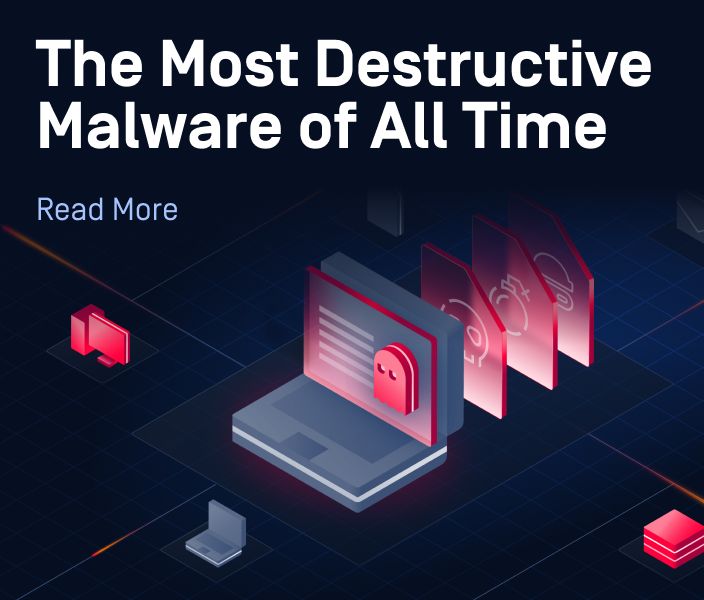As programmable computers became mainstream, software developers had a problem, "How do you create an isolated environment to test code without the risk of damaging the system?". The answer was to create a safe space called a sandbox—a very restricted environment to run untrusted code—where you could detonate executables without worrying about breaking the production environment.
It turns out that this virtual "playground" worked well and was extended to security research where potentially harmful or untrusted software could run safely without affecting the host machine's physical hardware or compromising sensitive data. By confining potentially untrusted code to a controlled virtual environment, sandboxing allows researchers to perform dynamic analysis and detect behavior patterns of potentially malicious software. In the context of security research sandbox systems are mainly used for "automated detonation" of malware and detect unknown malware via full attack-chain analysis and behavior pattern detection.
We'll look at the history of sandbox environments and how they are used by security analysts to fight highly evasive and adaptable threats.
- What is Sandboxing?
- History of Sandboxing Environments
- Why Sandboxing Exists in Cyber security
- Importance of Sandboxing Security
- Types of Sandboxing Techniques
- Benefits of Sandboxing
- Challenges and Limitations
- Best Practices for Effective Sandboxing
- Sandbox FAQs
What is Sandboxing?
Sandboxing is a cybersecurity practice that uses an isolated detonation environment, or a "sandbox," where security teams detonate, observe, analyze, detect, and block suspicious artifacts as part of the incident response cycle in a security operations center (SOC). This method provides an additional layer of defense against unknown attack vectors.

By utilizing a sandbox, security teams can conduct advanced malware analysis by running suspicious files in a segregated environment that emulates the end user's operating system. The key benefit of sandboxing is to observe the behavior of executable files, scripts, or malicious documents and thereby enable detecting completely new and unknown malware—or even malware crafted to execute in a specific environment. It's the next evolutionary step after signature-based detection implemented by antivirus (AV) engines.
History of Sandbox Environments
Sandboxing is a somewhat ambiguous term in computer science that refers to a wide variety of techniques. From a software security perspective, it was developed as a technique for achieving fault isolation in 1993. More broadly, the concept of experimenting in a safe environment has roots in multiple disciplines including the military, software engineering, statistics, and social sciences.
More recently, sandboxing led to the development of dynamic system domains or "trusted containers" on Sun's operating systems and "jails" on FreeBSD operating systems. These security mechanisms allow programs to be detonated in isolated areas within an operating system without affecting the system.
Nowadays, sandboxing techniques are commonly used for security research by many software developers and security professionals. Virtualization has also made sandboxes more widely available for end users.
Why Sandboxing Exists in Cyber security
In cybersecurity, sandboxing has gained popularity due to the increasingly high presence of evasive malware and advanced threats. Sandboxing is generally used to:
| Detonate Suspicious Software | Security researchers use sandboxing to safely analyze and study malware behavior. By detonating malicious code in a controlled environment, they can identify potential threats and develop countermeasures without compromising the host system. |
| Process Isolation | For vulnerability exploit mitigation. Think of PDF (adobe) or Chrome which both use sandboxing technology. Specifically, PDF was - for years - exploited over and over again, which drove the process isolation architecture. |
| Threat Hunting | Sandboxing enables threat hunters to learn the behaviors and characteristics of emerging malware, helping them to seek out similar threats. |

The Importance of Sandboxing Security
Sandboxing has left a substantial mark on the cybersecurity industry, with the market size reaching a staggering US$ 8.1 billion in 2022, according to research by Future Market Insights.
Growing Cyber Threat Landscape

Increasing sophistication of cyber-attack
As cybercriminals develop more advanced and targeted attacks with a malicious intent, sandboxing has become increasingly critical in detecting and preventing these threats before they can cause damage.

Rise of zero-day exploits
Zero-day exploits, which take advantage of previously unknown vulnerabilities, pose a significant risk to organizations. Sandboxing helps to identify and analyze these threats, providing valuable insights for developing countermeasures.

The proliferation of Internet of Things (IoT) devices
The rapid growth of IoT devices has expanded the attack surface for cybercriminals. Sandboxing can help secure these devices by isolating applications and restricting access to sensitive data.
Types of Sandboxing Techniques
There are two primary types of sandboxing techniques: operating system level and application level.
Operating System Level
Virtual Machines
A virtual machine (VM) is a form of sandboxing that emulates hardware to run multiple instances of an operating system. VMs provide a high level of isolation between the host and guest systems, allowing users to safely run untrusted software or create separate environments for different tasks.
Container
Containers are a lightweight form of virtualization that shares the kernel of the host's operating system, but it also isolates the application and its dependencies. This approach provides more efficient resource utilization compared to VMs while still maintaining a high level of isolation.
Emulation
An emulation sandbox is a virtual environment where software or systems can be emulated or simulated for the purpose of testing, detonation, or security analysis. Emulation sandboxes create an isolated environment for software or systems, shielding them from the host operating system and other applications to minimize the risk of damage or interference. These sandboxes incorporate security measures to prevent malware or malicious software from escaping and impacting the host system. They find extensive application in cybersecurity to detonate and analyze malware and threats safely. MetaDefender Sandbox serves as an example of an emulation-based sandbox. Additionally, they prove valuable for testing software compatibility across various operating systems and hardware configurations.
How does an emulation-based sandbox compare to a container or virtual machine?
An emulation-based sandbox, such as Qiling or QEMU, is different from a container or virtual machine in several ways:
- Emulation-based sandboxes emulate the underlying hardware architecture, whereas virtual machines and containers share the underlying host hardware architecture. This means that emulation-based sandboxes can run code from different architectures, such as ARM on an x86-based machine, whereas virtual machines and containers cannot.
- Emulation-based sandboxes typically have higher overhead than virtual machines or containers, as they are running in a fully emulated environment. This can make them slower and more resource intensive.
- Emulation-based sandboxes are generally more isolated and secure than virtual machines or containers, as they do not share the host operating system kernel or other resources. This makes them a good choice for analyzing and testing malware or other potentially harmful code.
- Containers and virtual machines are generally easier to set up and use than emulation-based sandboxes, as they are based on well-established technologies that are widely supported.
Overall, emulation-based sandboxes are a powerful tool for analyzing and testing software and systems in a controlled environment, but they have higher overhead and can be more difficult to set up and use than virtual machines or containers. The choice of which technology to use will depend on the specific requirements of the use case.
Application Level

Software Wrappers
These act as a protective layer around an application, limiting its privileges and controlling its access to system resources. This type of sandboxing is useful for restricting potentially harmful applications while still allowing them to function.

Web Browser Sandboxes
Modern web browsers employ sandboxing techniques to isolate web content from the user's system. This helps protect user data from malicious websites or scripts that may try to exploit vulnerabilities in the browser or operating system.
Benefits of Sandboxing
Sandboxing provides a wide range of security benefits that enhances an organization’s posture against unknown and known security risks.
Enhanced Security
Sandboxing provides an additional layer of security by detecting and isolating malware as well as malicious software. By executing suspicious code in sandbox testing environments, users can minimize the risk of security breaches and protect their valuable data.
Protection Against Unknown Threats
Using a sandbox is a reliable method for preventing unknown threats or advanced malware that evade straightforward detection methods. Zero-day threats can escape signature-based detection mechanisms, so triggering them in a safe and isolated environment protects organizations from catastrophic attacks.
Better Actionable Intelligence
Knowledge is power, and sandbox testing offers a treasure trove of actionable intelligence that enables organizations to create a clear threat profile, which will be extremely useful for preventing future similar threats.
Limitations and Challenges of Sandboxing
Performance Overhead & Scalability
One of the primary limitations of sandboxing is the overhead performance associated with virtualization. Running applications in a sandbox may require additional resources, resulting in slower execution times. It is typically impractical to sandbox every file in an environment without a significant infrastructure. Therefore, sandboxing is usually integrated as an add-on technology within a broader processing funnel.
Evasion Techniques
Malware developers are constantly developing new techniques to evade detection. By identifying that they are running in a sandbox environment, these suspicious programs can alter their behavior or delay the execution to bypass analysis and detection. For this reason, sandbox security is also an important factor to take into consideration.
High Complexity
Implementing and maintaining sandbox environments can be complex and time-consuming. Organizations need to ensure that they have the necessary expertise and resources to effectively manage these environments.

Best Practices for Effective Sandboxing
Create a Golden Environment
The primary challenge lies in analyzing samples across various environments, or ideally, on the exact target environment if all endpoints are standardized. For example, consider an exploit that only activates on Adobe Reader v9. Without testing samples against a wide range of Adobe versions, it becomes difficult to trigger the exploit. Given the infinite combinations of application stacks and environments, the optimal approach is to create a virtual environment that serves as a "golden environment" mimicking the streamlined endpoint setup. Ideally, all endpoints in the corporate environment would "look the same" and utilize the same application stack and version.
Employ Security Guardrails for a Virtual Machine
To improve sandbox security, always install security guardrails that detect sensitive Personal Identifiable Information or sensitive data when using a sandbox. Certain guardrails can also prevent malware from breaking away from the sandbox environment.
Check for False Positives by Submitting Harmless Files
False positives can cause harm to your organization’s workflow, as IT experts have to conduct further analysis to make sure the files are safe. To keep false positives to a minimum, consider adding harmless files into the sandbox every now and then. If a false positive is detected, there might be an issue with the sandbox’s definitions.
Follow a Multi-Layered Security Approach
Sandboxing should not be relied upon as the sole security measure. It is most effective when combined with other security tools and practices, such as firewalls, intrusion detection systems, and heuristic scanning. Implementing a defense-in-depth strategy provides multiple layers of protection, making it more difficult for attackers to compromise a system.
Continuously Monitor the Sandbox Software for Malicious Code
Sandboxes that enable continuous monitoring are valuable assets to threat hunters and security experts. Knowing how malware sends out requests and interacts with the sandbox environment helps them gain valuable actionable intelligence for future security operations.
Conclusion
Sandboxing is a valuable security solution in modern cybersecurity, providing a powerful means of safeguarding digital spaces. It allows for the safe execution of untrusted software code, malware analysis, and controlled testing of new applications, while also limiting application access to sensitive data and resources.
Sandbox FAQ
Q: Can sandboxing replace traditional antivirus software?
A: Sandboxing is not a replacement for traditional antivirus software. It is most effective when combined with other security tools and practices, such as firewalls, intrusion detection systems, and antivirus software, to create a comprehensive defense-in-depth strategy.
Q: Can sandboxing protect against all types of malware?
A: While sandboxing is an effective tool for detecting and isolating many types of malware, it may not catch all threats. Some malware can evade sandbox detection by altering its behavior or delaying execution. Employing a multi-layered security approach can help address these challenges.
Q: Can sandboxing impact the performance of my system or applications?
A: Sandboxing can introduce performance overhead due to the added resources needed for virtualization or isolation. This impact can vary depending on the sandboxing technique and the specific application being sandboxed.
Q: What is the Windows sandbox environment?
A: Windows Sandbox provides a lightweight desktop environment to safely run applications in isolation. Software installed inside the sandbox environment remains "sandboxed" and runs separately from the host machine. A sandbox is temporary. When it's closed, all the software and files and the state are deleted.

